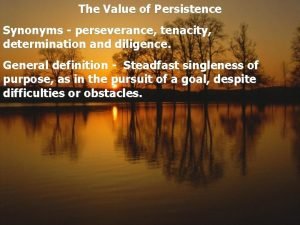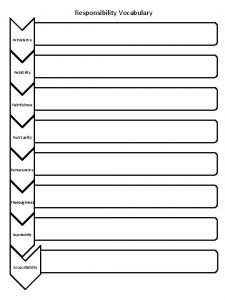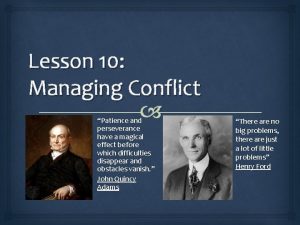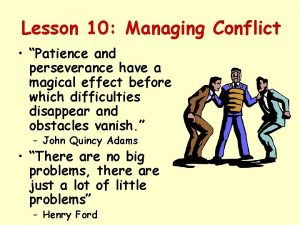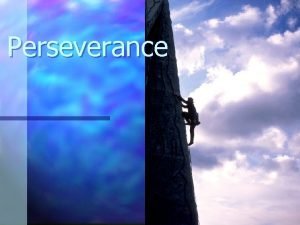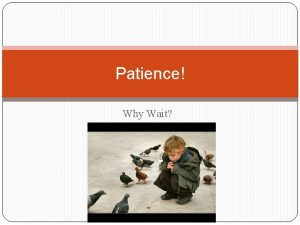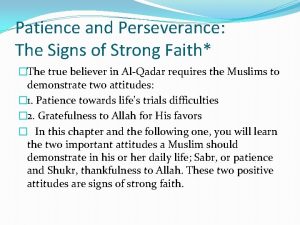Lesson 10 Managing Conflict Patience and perseverance have









- Slides: 9

Lesson 10: Managing Conflict “Patience and perseverance have a magical effect before which difficulties disappear and obstacles vanish. ” John Quincy Adams “There are no big problems, there are just a lot of little problems” Henry Ford

What is conflict? o Conflict is inevitable & will occur often, but it can be a positive force. o Whenever one person perceives his or her interests are being opposed or set back personal conflict will occur. o Group conflict occurs when sufficient breakdown in the normal activities between people that creates difficulty in working together to accomplish goals.

What are two types of conflict? o Conflict that is a positive influence and serves the interests of the organization is called “functional conflict. ” o Can be considered “constructive. ” o “Dysfunctional conflict” focuses on personalities instead of issues, and hinders the achievement of organization goals. o Conflict can be an asset or a liability.

What are the common causes of conflict? o Certain situations produce more conflict than others (must identify those causes!) o Incompatibility is most common cause of conflict. o Incompatibility as the result of personality differences or value systems. o 2 nd most common cause: Overlapping or unclear job boundaries.

What are the common causes of conflict? o Other common causes: o Inadequate Communication o Limited Resources o Unreasonable deadlines or policies o Decision-making processes o Unmet expectations. o Leaders must be proactive, and carefully read early warning signs.

What are five conflict strategies? o People tend to handle conflict in a pattern o This pattern becomes a behavioral style. o No single conflict strategy is best to use all the time. o Competing: o “I win, you lose” (high concern for self) o Accommodating: o Neglecting own concerns to satisfy others. Helps immediate situation but does not help in the long run.

What are five conflict strategies? o Avoiding: o Passive withdrawal from the conflict. o Short term fix. o Collaborating: o Problem-solving approach o Time consuming and complex. o Concern for self and others. o Compromising: o Requires give-and-take from both parties.

How can leaders manage conflict? o The critical issue is how to manage it productively to produce positive change without negative consequences. o Simplest way to manage conflict is to establish rules and procedures. o When rules don’t work the organization’s hierarchy is relied upon as conflicts are referred to a common superior.

How can leaders manage conflict? o o Liaison is appointed for conflict resolution. o Can cut through bureaucracy for quicker resolution o When conflict is complex. Task forces. Outside arbitrators, consultants, & mediators used when organization cannot resolve conflict. Company training in conflict management used to teach employees to cooperate, listen and learn, and respect other’s opinions.

